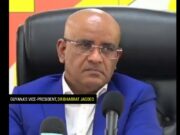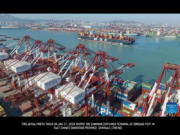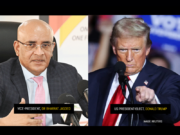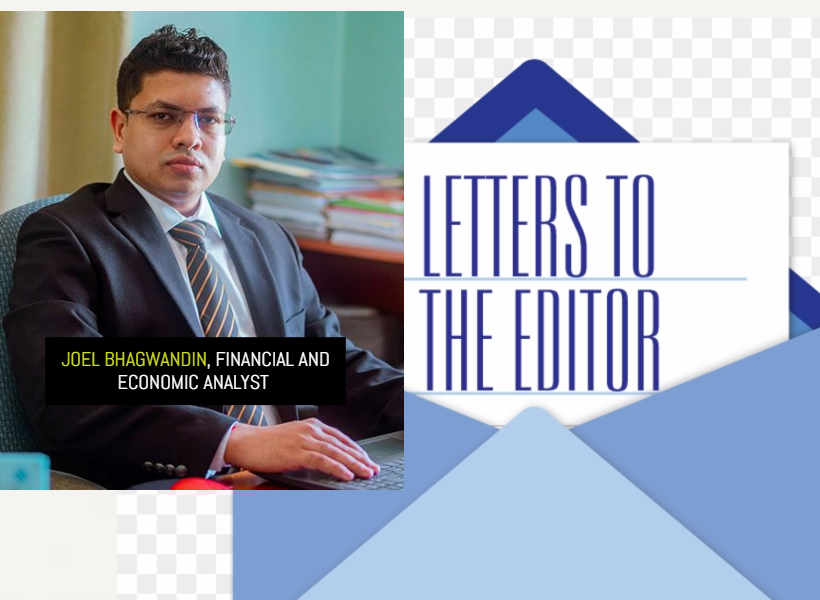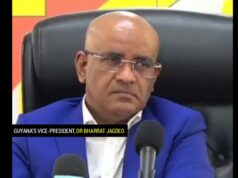Dear Editor,
The author of the anonymous Peeping Tom column by Kaieteur News (KN) of April 15th, 2023, posed some questions for the Vice President, Dr. Bharrat Jagdeo. I would like to take the liberty to provide the answer to one of those questions which is no State secret but technical.
To this end, the question is related to the interest rate that “Guyana is paying” to the oil companies and whether the Government intends to place a cap on interest rates. This is a burning question that the publisher of KN consistently regurgitates for the past three years. The genesis stemmed from an economist, Tom Mitro. He had argued that in the absence of provisions to cap interest rates in the Production Sharing Agreement (PSA), that the country is “losing big” due to the absence of imposed limits.
As I had previously argued in response to the economist’s assertion in June 2022, it was a misguided argument coupled with the fact that he failed to demonstrate by way of analysis to what extent Guyana is losing.
Notwithstanding, let’s understand how interest rate cap works and whether it is applicable to the oil companies’ operations in Guyana.
Capping interest rates is one way in which firms can hedge interest rate risks. ExxonMobil is a multinational U.S company that raises its financing from the global capital markets both in the form debt and equity. Unlike the unsophisticated financial markets like in the case of small, underdeveloped economies like Guyana, the global financial market is far more efficient, advanced, and sophisticated. So, whereas in Guyana, interest rates on loans are typically fixed, advanced financial markets have both fixed and floating interest rates which are determined by the market conditions and other financial, economic, and macro risk factors.
Within this environment, the oil companies are exposed to interest rate risks which are managed, viz-á-viz, hedging strategies with derivative instruments. As a publicly traded company, Exxon’s annual report is a publicly available document which includes full disclosure and explanation in respect of how the company manages its financial risks as part of its enterprise risk management framework. For ease of reference, the hereunder-stated excerpt is cited from the company’s annual report for the FY 2022:
Derivative Instruments: The Corporation’s size, strong capital structure, geographic diversity, and the complementary nature of its business segments reduce the Corporation’s enterprise-wide risk from changes in commodity prices, currency rates, and interest rates…The Corporation enters into currency and interest rate derivates, none of which are material to the Corporation’s financial position as of December 31, 2022, and 2021, or results of operations for 2022, 2021, and 2020. Credit risk associated with the Corporation’s derivative position is mitigated by several factors, including the use of derivative clearing exchanges and the quality of and financial limits placed on derivative counterparties. The Corporation maintains a system of controls that includes the authorization, reporting, and monitoring of derivative activity”.
The net notional long/(short) position of derivative instruments at December 31, 2022, and December 31, 2021, was as follow in the chart attached to this missive. As shown, the net realized and unrealized losses on derivative instruments in FY 2022 represented 0.36% of revenue which stood at US$398.7 billion, thus having an immaterial impact on the company’s overall financial performance. 
According to ExxonMobil’s annual report for FY 2022, the company’s debt-to-equity ratio was 23.17%; the cost of debt capital was 5.4%, the cost of equity was 10.6%, and the weighted average cost of capital (WACC) was 10.8%. Hence, now that there is some insight into ExxonMobil’s global financials in terms of the level of debt employed in its capital structure which is relatively low, and the cost of debt capital as well as the WACC, let’s look at their Guyana balance sheet to ascertain the debt-to-equity ratio and cost of capital/interest rate on the debt financing.
The financial statements for FY 2021 is publicly available and as far as I am aware, all of the local media houses, including KN, are in possession of the same.
Having examined the FY 2021 financial statements for Esso Exploration and Production Guyana Ltd (EEPGL), total equity stood at G$876.776 billion and total liabilities stood at G$386.956 billion, giving rise to a debt-to-equity ratio of 30%, which is relatively modest.
Moreover, the long-term debt stood at G$189 billion―giving rise to a long-term-debt-to-equity ratio of 17.68%. These indicators suggest that the Guyana operation is financed by a relatively low level of debt financing and a higher level of shareholder’s equity financing. As such, the interest expense will be relatively low-to-modest relative to the revenue generated.
Further examination and analysis of the financial statements for FY 2021 revealed that the implicit interest rate on EEPGL’s long-term debt is 5.18%. And this can be calculated mathematically by applying the implicit interest rate formula using the FY 2021 financial statements together with the notes to the financial statements. Additionally, the lease interest and finance cost on the profit and loss statement for FY 2021 represented 1.21% of the total sales derived from the sale of crude.
Concluding Remarks/Summary
The notion that Guyana is paying the oil companies interest on borrowed funds is a distorted interpretation. It is the oil companies that have raised the capital for the oil and gas exploration, development, and production activities in Guyana.
Altogether, the capping of interest rate on debt financing within the PSA in the case of Guyana is not applicable, not necessary and would be unsuitable for the following reasons:
a) ExxonMobil is exposed to interest risks globally which is managed/mitigated through hedging strategies with the use of derivative instruments. Consequently, the impact of the net gain/loss attributed to interest risk is immaterial the companies overall financial performance as demonstrated herein.
b) The debt-to-equity ratio based on EEPGL’s balance sheet is relatively low-to-moderate, thereby implying a relatively low interest expense on the profit and loss account which represented 1.25% of revenue in FY 2021.
c) The implicit interest rate on the long-term debt for ExxonMobil Guyana is 5.18%, which is 22 basis points (bps) lower than the parent company’s interest on debt when measured against its global overall cost of capital and financing structure.
d) Generally, the interest rate is essentially the cost of raising capital and applies to both short-term and long-term financing. Therefore, the cost of capital which is the same as the financing cost/interest expense must be treated as an expense item on the profit and loss account.
Yours sincerely,
Joel Bhagwandin
Public Policy and Financial Analyst
